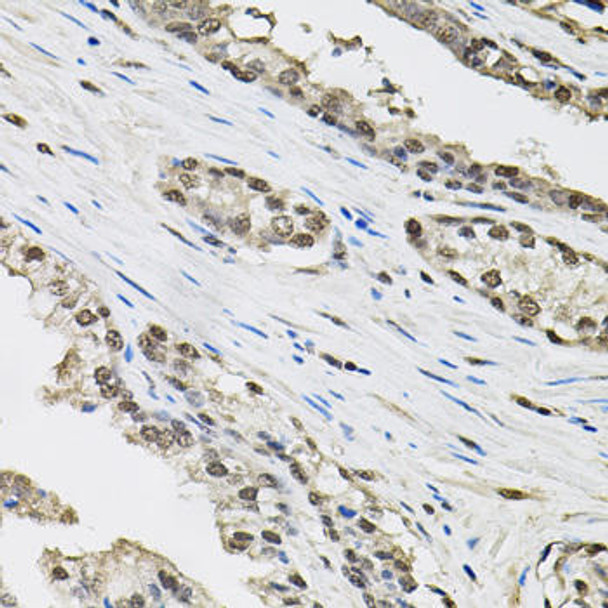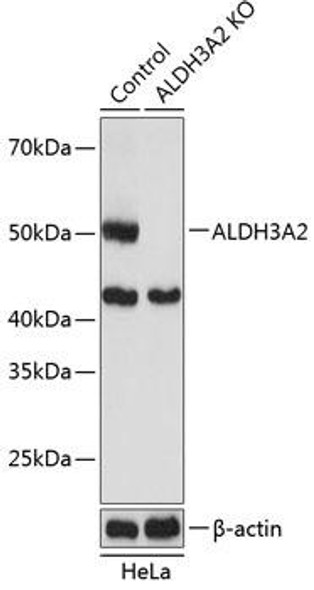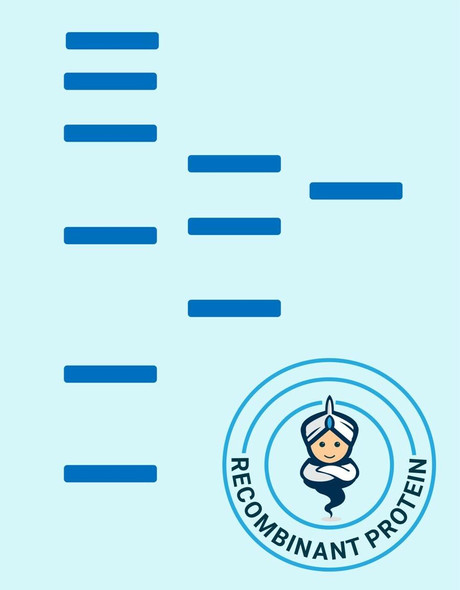Description
Anti-TCEB1 Antibody (CAB1989)
The Elongin C Polyclonal Antibody (CAB1989) is a valuable tool for researchers studying Elongin C, a protein complex involved in the regulation of transcription and protein degradation processes. This antibody, generated in rabbits, is highly specific and responsive to human samples, making it an excellent choice for various research applications, including Western blotting.Elongin C is a crucial component of the Elongin complex, which plays a key role in the regulation of RNA polymerase II and the ubiquitin-proteasome pathway. Dysregulation of Elongin C has been implicated in various diseases, including cancer and neurological disorders.
By using the Elongin C Polyclonal Antibody, researchers can investigate the expression and function of Elongin C in different cell types and tissues, providing insights into its role in disease pathology and potential therapeutic targets.Overall, the Elongin C Polyclonal Antibody (CAB1989) is a reliable tool for researchers interested in unraveling the molecular mechanisms involving Elongin C and its implications in various diseases. Its high specificity and reactivity make it an ideal choice for advancing research in transcriptional regulation and protein degradation pathways.
| Antibody Name: | Anti-TCEB1 Antibody |
| Antibody SKU: | CAB1989 |
| Antibody Size: | 20uL, 50uL, 100uL |
| Application: | WB IHC |
| Reactivity: | Human, Mouse, Rat |
| Host Species: | Rabbit |
| Immunogen: | Recombinant fusion protein containing a sequence corresponding to amino acids 1-112 of human TCEB1 (NP_001191791.1). |
| Application: | WB IHC |
| Recommended Dilution: | WB 1:500 - 1:2000 IHC 1:50 - 1:100 |
| Reactivity: | Human, Mouse, Rat |
| Positive Samples: | Jurkat, HepG2, Mouse testis, Mouse brain |
| Immunogen: | Recombinant fusion protein containing a sequence corresponding to amino acids 1-112 of human TCEB1 (NP_001191791.1). |
| Purification Method: | Affinity purification |
| Storage Buffer: | Store at -20'C. Avoid freeze / thaw cycles. Buffer: PBS with 0.02% sodium azide, 50% glycerol, pH7.3. |
| Isotype: | IgG |
| Sequence: | MDGE EKTY GGCE GPDA MYVK LISS DGHE FIVK REHA LTSG TIKA MLSG PGQF AENE TNEV NFRE IPSH VLSK VCMY FTYK VRYT NSST EIPE FPIA PEIA LELL MAAN FLDC |
| Gene ID: | 6921 |
| Uniprot: | Q15369 |
| Cellular Location: | Nucleus |
| Calculated MW: | 10kDa/12kDa |
| Observed MW: | 12kDa |
| Synonyms: | ELOC, SIII, TCEB1, eloC, elongin-C |
| Background: | This gene encodes the protein elongin C, which is a subunit of the transcription factor B (SIII) complex. The SIII complex is composed of elongins A/A2, B and C. It activates elongation by RNA polymerase II by suppressing transient pausing of the polymerase at many sites within transcription units. Elongin A functions as the transcriptionally active component of the SIII complex, whereas elongins B and C are regulatory subunits. Elongin A2 is specifically expressed in the testis, and capable of forming a stable complex with elongins B and C. The von Hippel-Lindau tumor suppressor protein binds to elongins B and C, and thereby inhibits transcription elongation. Multiple alternatively spliced transcript variants encoding two distinct isoforms have been identified. |
| UniProt Protein Function: | TCEB1: SIII, also known as elongin, is a general transcription elongation factor that increases the RNA polymerase II transcription elongation past template-encoded arresting sites. Subunit A is transcriptionally active and its transcription activity is strongly enhanced by binding to the dimeric complex of the SIII regulatory subunits B and C (elongin BC complex). Belongs to the SKP1 family. |
| UniProt Protein Details: | Protein type:Transcription initiation complex Chromosomal Location of Human Ortholog: 8q21.11 Cellular Component: cytosol; nucleoplasm Molecular Function:protein binding; ubiquitin-protein ligase activity Biological Process: positive regulation of RNA elongation from RNA polymerase II promoter; protein ubiquitination during ubiquitin-dependent protein catabolic process; regulation of transcription from RNA polymerase II promoter; RNA elongation from RNA polymerase II promoter; transcription from RNA polymerase II promoter |
| NCBI Summary: | This gene encodes the protein elongin C, which is a subunit of the transcription factor B (SIII) complex. The SIII complex is composed of elongins A/A2, B and C. It activates elongation by RNA polymerase II by suppressing transient pausing of the polymerase at many sites within transcription units. Elongin A functions as the transcriptionally active component of the SIII complex, whereas elongins B and C are regulatory subunits. Elongin A2 is specifically expressed in the testis, and capable of forming a stable complex with elongins B and C. The von Hippel-Lindau tumor suppressor protein binds to elongins B and C, and thereby inhibits transcription elongation. Multiple alternatively spliced transcript variants encoding two distinct isoforms have been identified. [provided by RefSeq, Mar 2011] |
| UniProt Code: | Q15369 |
| NCBI GenInfo Identifier: | 32699511 |
| NCBI Gene ID: | 6921 |
| NCBI Accession: | Q15369.1 |
| UniProt Secondary Accession: | Q15369,Q567Q6, E5RGD9, |
| UniProt Related Accession: | Q15369 |
| Molecular Weight: | 10,832 Da |
| NCBI Full Name: | Transcription elongation factor B polypeptide 1 |
| NCBI Synonym Full Names: | transcription elongation factor B subunit 1 |
| NCBI Official Symbol: | TCEB1 |
| NCBI Official Synonym Symbols: | SIII; eloC |
| NCBI Protein Information: | transcription elongation factor B polypeptide 1 |
| UniProt Protein Name: | Transcription elongation factor B polypeptide 1 |
| UniProt Synonym Protein Names: | Elongin 15 kDa subunit; Elongin-C; EloC; RNA polymerase II transcription factor SIII subunit C; SIII p15 |
| Protein Family: | Transcription elongation factor B polypeptide |
| UniProt Gene Name: | TCEB1 |
| UniProt Entry Name: | ELOC_HUMAN |


















